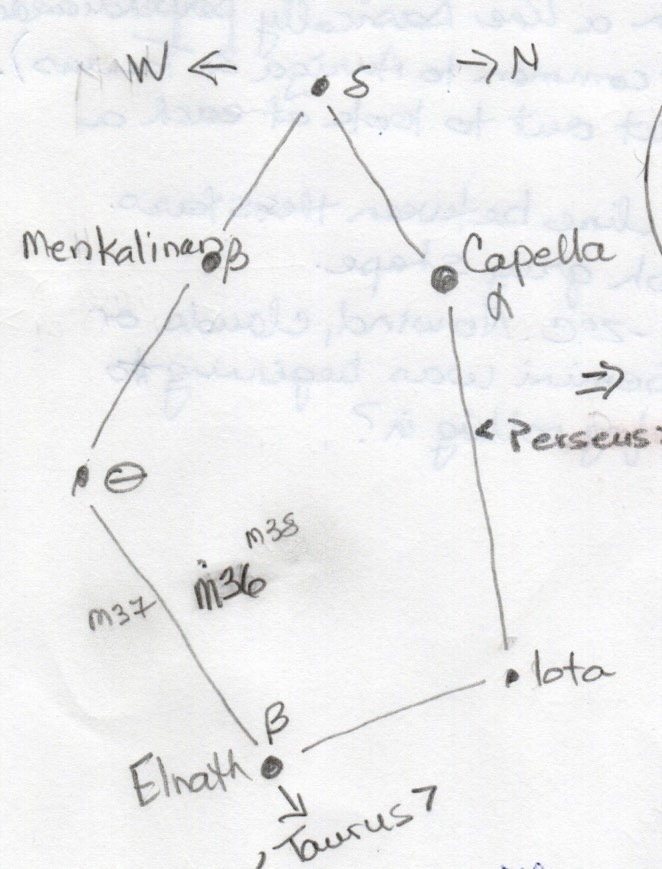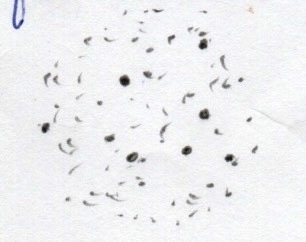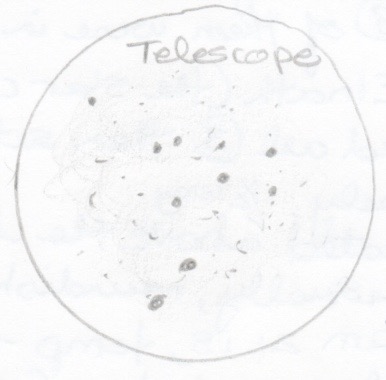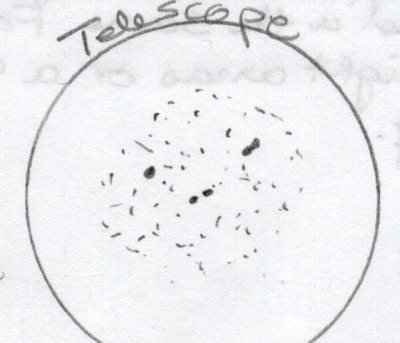Constellation: Auriga, Cepheus
Conjunction: Moon-Venus (Refer to Lunar Session - May 18, 2018)
Messier Objects: M36 (Pinwheel Cluster), M37 (NGC 2099), M38 (Starfish Cluster)
Stars: Mekbuda in Gemini
Planets: Jupiter (in Libra)
Location: Home
Date: 2018-05-18
Time: 8:30 PM - 11:00 PM ADT
Instrument: Visual + Binocular 10x30 IS + 10" Meade SCT with 30 mm eyepiece
Transparency: Good (3)
Seeing: Good (3)
Temperature: 9º C - 3º C
Clear skies, no cloud, no wind. Hazy near the horizon. Part of this session was for lunar observing, especially with the conjunction of the Moon with Venus and Mekbuda (in Gemini).
|
Auriga & 3 Messier Objects ( M36, M37, M38) M37 / NGC 2099 @ 10:00 PM M36 / Pinwheel Cluster @ 10:20 PM M38 / Starfish Cluster @ 10:28 PM |
|
||||
|
Jupiter (in Libra) Binoculars & Telescope: Easily found the planet and saw its 4 Galilean moons. Telescope: Could make out the bands but not the giant red storm (GRS) on the planet. The bands were almost perpendicular to the visual horizon. |
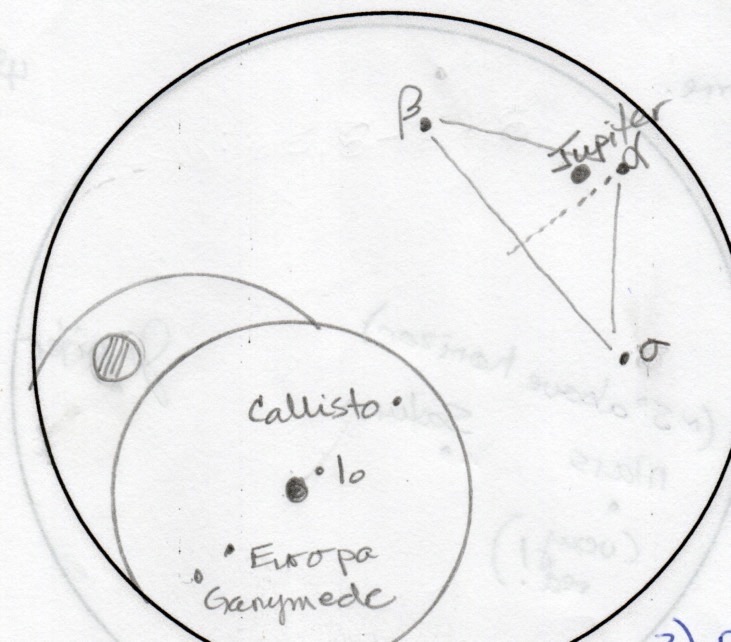
|
Cepheus
Time: 11:17 PM ADT
Equipment: Visual + Binoculars
S&T Ref Chart: 71, 73
All 8 main stars of the constellation could be found in the northern sky above our neighbour's trees. My target for tonight was δ Cephei. After blocking out their street light, I located the area of δ Cephei visually and then with the binoculars. I found the variable Cepheid but could not make out the 2 stars of the double, just a single bright star. Will need to go out again and confirm this find with binoculars and then with the telescope.
